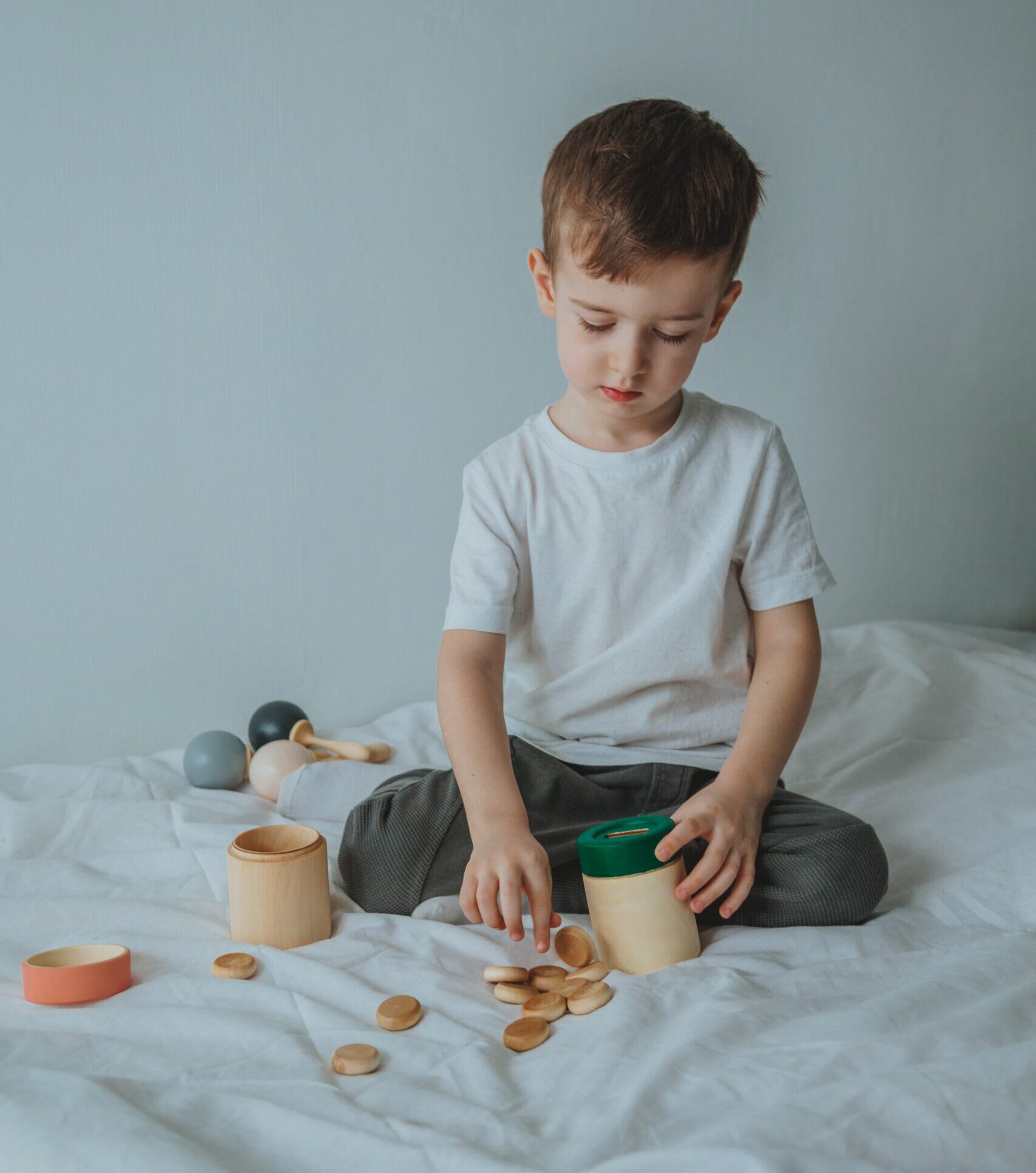Child-Directed Work
How does the Montessori principle of “child-directed work,” well, work? Can you use it in your home? Yes! That is, if you’re OK with your children growing into independent, self-confident, creative problem-solvers who find true joy in learning. If you’re OK with that, then read on!

The Montessori Principle of Child-Directed Work
Applying the principle of child-directed work is hard. As adults, we have to resist the urge to control our children’s time, which takes self-control. Dr. Maria Montessori cautioned this countless times in her writings about the Montessori method.
It can be difficult as adults to see our children be idle, but Dr. Montessori taught that children naturally use their time in ways that help them learn. But don’t take my word for it!
Dr. Montessori on the Principle of Child-Directed Work
Here are five Montessori quotes where Dr. Montessori urges us to trust that our children will learn through child-directed work:
- “Young children do not have to go to school to work. Playtime for them is a time of learning by practice. Every new movement which a little child makes is tried first of all tentatively and then repeated until the first clumsiness is gradually refined to an exact movement. Every plaything he uses is a tool for his work.” (“Maria Montessori Speaks to Parents,” p. 65)
- “You will be surprised when I tell you that the greater part of what you call ‘play’ is really work.” (“Maria Montessori Speaks to Parents,” p. 31)
 “The wise mother will remember that playtime is never wasted. So long as the children are busily absorbed, they are working at their own development – for children would rather work than play.” (“Maria Montessori Speaks to Parents,” p. 34)
“The wise mother will remember that playtime is never wasted. So long as the children are busily absorbed, they are working at their own development – for children would rather work than play.” (“Maria Montessori Speaks to Parents,” p. 34)- “Grown-ups think of play as a purposeless occupation that keeps children happy and out of mischief, but actually when children are left to play by themselves very little of their activity is purposeless.” (“Maria Montessori Speaks to Parents,” p. 31)
- “If the child is allowed to use his spontaneous activity in a tranquil environment without interference or unasked for help, he is indeed engaged in a most important work: he is building the man he will one day be.” (“Maria Montessori Speaks to Parents,” p. 66)
A child’s play may not always look like work, but it is. During play, children learn how to move and control their bodies; that when we drop things they fall to the ground; that block towers are sturdier when the biggest blocks support the smaller ones. Play helps children gain independence and self-confidence. Self-directed play is the gold standard when it comes to early learning.
How to Use the Montessori Principle of Child-Directed Work at Home
Try these tips to incorporate the Montessori principle of child-directed work in your home.
Guard your child’s free time
To direct their own time, children must have some time of their own. Ensure they have time at home where they aren’t involved in adult-directed activities.
Observe your child
Pay close attention to what your child is currently working on. You can more easily provide materials that will appeal to your child when you pay close attention to their budding interests.
Follow the child
If your child has taken an interest in dogs, you can provide books with real images of various dog breeds, dogs at different ages, and dog care items. If they’ve taken an interest in jumping, you might provide obstacles for jumping onto and jumping over. Has your child been helping you in the garden? Provide a corner where they can care for a plant of their own. Include a seed, magnifying glass, diagram of plant parts, and child-sized watering can. Remember the important principle of process over product — the process of learning is more important than the end product your child creates.
Materials and Space for Child-Directed Work
 Choose materials wisely
Choose materials wisely
It’s easy to think that the more toys we provide for our children, the better they’ll learn. However, we should be highly selective and minimize toys to avoid overstimulation. This also encourages children to spend longer periods of concentration on an item. Choose appealing toys that encourage growth, like shape sorters and puzzles, wooden blocks, and child-sized versions of adult tools like brooms or water pitchers. Opt for natural, wood products over plastic. These materials tend to be expensive, but you can also find cheap Montessori finds with some effort and creativity.
Arrange materials neatly
An organized environment is calm and peaceful with space to move freely. It encourages concentration. A cluttered, crowded, messy space, on the other hand, is chaotic and overstimulating. In a cluttered space, your child is more likely to flit from one toy to another without spending time engaging with one item.
Spend plenty of time outside
Child-directed work doesn’t need to occur inside near a shelf. Spending time in nature is a valuable, budget-friendly work for children of all ages. The great outdoors includes plenty of opportunities for sensorial exploration and gross motor work. Additionally, outdoor time can supplement academics learned at home in school. For example, a child can learn about shoots and sprouts (like with the Montessori By Mom Shoots and Sprouts Toolbox) inside and observe real shoots and sprouts outside.
Respect Your Child’s Concentration
As you begin to offer your child unstructured free time, liberty to choose her own activities, an appealing environment, and ideal learning materials, you will likely notice your child concentrating on her work with a new sense of focus. You’ve started down the path that will help your child reap the benefits of the Montessori principle of child-directed work. To make the most of it, protect your child from disruptions when they’re engaged in work. Avoid disrupting your child to correct them or even to offer praise. The joy of learning and the satisfaction of work are their own rewards.




0 Comments